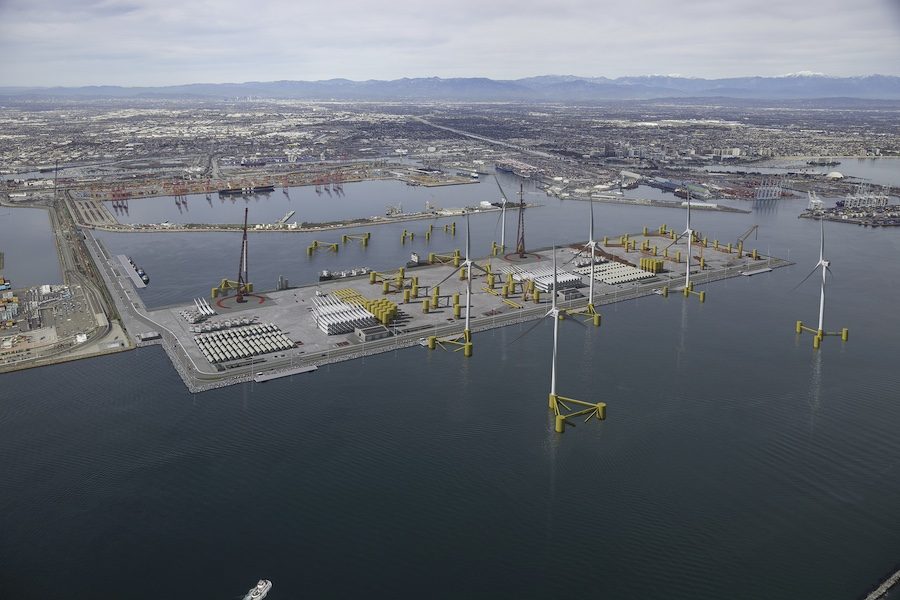California has awarded $20 million for design and preconstruction work for the Port of Long Beach’s proposed $5-billion Pier Wind terminal, a 400-acre facility the state sees as key to its offshore wind energy development strategy. The state Energy Commission grant also awarded on Oct. 8 another $22.75 million for work at several other port sites, in what officials described as the first appropriation for offshore wind of funding from California’s Proposition 4 climate bond that voters approved last year. It includes a total of about $475 million for statewide offshore-wind port upgrades and related facilities through June 2030,
The commission grant to Long Beach—matched by $11 million from the port—will cover engineering, environmental review, business planning and community outreach for the Long Beach project. “This grant … eases the path for us to finish design, review and engagement steps we need to prepare the project for construction in the next few years,” said Suzanne Plezia, port managing director of engineering.
Pier Wind would be built on new land in the port’s outer harbor, with deep-water berths, heavy-lift wharves and staging areas for turbine components. If built, it would be the nation’s largest hub for assembling floating offshore wind turbines.
According to a Port of Long Beach statement, construction could begin in 2027, with 200 acres completed by 2031 and full build-out by 2035, pending environmental approvals. The port and the state have yet to release financing details.
Plezia called Pier Wind “an integral part of California achieving its wind energy goals,” adding that it would also strengthen the grid as demand grows during the zero-emissions transition.
The Port San Luis Harbor District which also gained $3 million in commission grants to fund offshore wind port planning, engineering and design, is set to become the state’s first dedicated offshore wind hub, according to Reid Boggiano, an agency wind program specialist. The Humboldt Bay Harbor and the cities of Oakland and Richmond also received grants to host offshore wind ports.
Pier Wind and an expanded Redwood Marine Terminal in Humboldt County are expected to become core areas for fabrication assembly and deployment backbone of California’s offshore wind buildout, as the state targets 25 GW of capacity by 2045. The Humboldt projects in August lost $427 million in awarded federal funding from the US Transportation Dept., with other US port projects losing about $250 million more.
“It’s essential that we decarbonize the power sector in California … and that involves having a diversity of resources,” commission Chair David Hochschild said. “Offshore wind is a really important element of that. The wind resource offshore is significantly better and stronger and more enduring than the wind on land, and there’s been an enormous amount of innovation that’s driving costs down.”
According to Nancy Kirshner-Rodriguez, senior policy director of U.S. offshore wind sector trade group Oceantic: “States have always been the driving force of [the] industry, and will continue to be, regardless of who is in power. They are … underwriting the critical enabling infrastructure investments that make the market move forward.”

